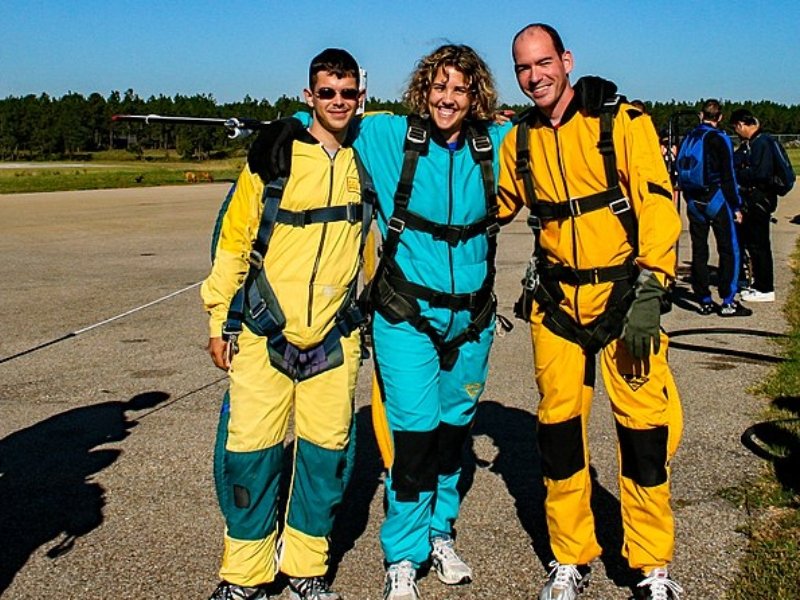How much does AAF skydiving cost? One of the things that put many prospective new skydivers off is the cost. While jump tickets and equipment hire can be relatively affordable, training courses can run into the $1,000s. To turn up to a jump spot, rent gear, and skydive solo, you will need to have an A license. And to get your A license, you will need to complete a beginner’s skydiving course.
However, you don’t need to commit to an expensive A license skydiving course straight away. AFF is an acronym for Accelerate Freefall and is the first and most significant part of many modern A license courses. Many skydiving schools will allow you to take the AFF separately, reducing the upfront costs and allowing you to learn freefall before deciding whether to progress to become a fully licensed skydiver.
Let’s take a deeper look into what AFF skydiving is and how much the different sections of the course cost.
What is AFF skydiving?
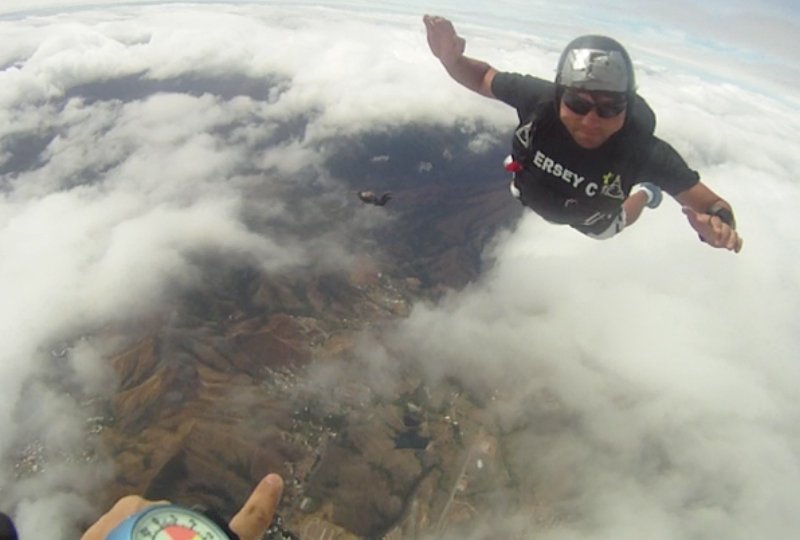
AFF has become the most popular training method for new skydivers. It’s considered the fastest and most efficient way to teach new skydivers how to freefall. It usually consists of 8 sections with the assistance of trained professionals. A student can go from total newbie to solo freefall and perform basic turns, flips, and tracks within eight to nine skydives.
Previously when a course would train new skydivers, they would be taken up in groups and perform static line jumps; Each skydiver has their gear attached to a fixed-line attached to the plane. When they dive from the plane, the line eventually pulls tight and deploys their parachute. While this is still effective and cheaper for skydivers, it doesn’t give much-dedicated training or freefall time. AAF is very different.
With AFF, students are taken up to around 10,000 to 15,000 feet and will skydive alongside one or two instructors (usually two instructors per student for the first three jumps). The instructors will jump alongside the student, holding on to them and teaching them freefall positioning and maneuvers. They will also communicate with the student via radio. This method offers the student tailored learning. It’s speedy and practical, with each jump allowing the instructors to focus on the student’s development. After each jump, there is a debriefing while watching video footage of the jump.
With each of the eight AFF sections, the student will be taught new maneuvers and have to show competence at each level to progress. A new student can be skydiving totally solo within two to three jumps without the instructor needing to hold on.
How much does AFF skydiving cost?
The AFF consists of eight sections. It’s possible to reduce your AFF skydiving initial cost by booking and pay for each section at a time, allowing you to manage your time and costs better. Let’s take a look at each section and how much you’d expect to pay:
Section 1: Theory and first jump = $250 to $350
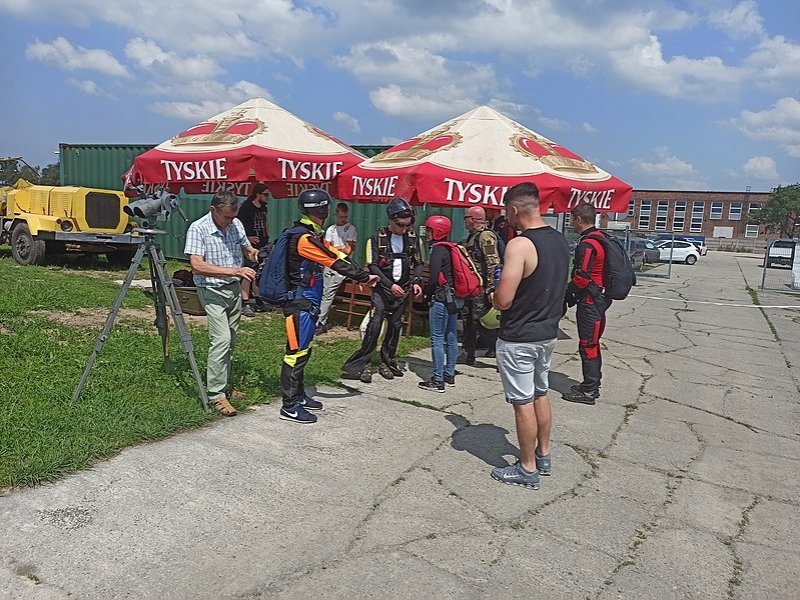
Learning basic theory and taking your first solo skydive!
During this first section, you will spend most of the first day in the classroom learning about theory and safety. You’ll watch videos and get practical demonstrations on what all the equipment is and does. This classroom time will set you up for your first skydive, which will usually take place the following day.
On day two, you will take to the air for your first solo skydive. You will usually jump with two instructors, and your suit will have handles for them to hold as you freefall. They will dive with you and help place you in the correct position. When it’s time to deploy your parachute, they will move away and signal for you to pull the cord. If you cannot do this or you look in trouble for any reason, they will deploy your parachute for you.
Sections 2 & 3: Body positions = $200 to $300 each
Perfecting your freefall position and freefall without assistance
Sections two and three each consist of a skydive and review. In section two, you will be starting to up your game and mastering essential body positioning. In the first section, the instructors held on to you all the way, making sure you maintained perfect positioning in freefall, but in your section two dive, they will be looking to let you free for a brief period. This freedom will help you build up experience and confidence in maintaining your position.
During the section three skydive, your two instructors will aim to release you and allow you to freefall completely solo (or for as long as they feel it’s safe). They will freefall close to you, on hand, should you have any problems. This jump aims to prove you can now freefall stably on your own. After both sections, you will review video footage and debrief.
Sections 4 & 5: Turns = $180 to $250 each

Learning to turn in freefall and maintain stability
In sections four and five, you will be learning how to turn. Both will consist of preparation, one skydive from 10,000 to 15,0000 feet, and a debriefing session to review your progress. Unlike the first three skydives, you will now skydive with only one instructor who will only hold on to you if and when needed.
The section four skydive will focus on a simple 90-degree turn, while your section five skydive will progress you to a complete 360-degree turn. You will need to show control in the turns and the ability to stabilize after.
Sections 6 & 7: Advance stablization = $180 to $250 each
Learning more advanced freefall maneuvers
Sections six and seven will also consist of one skydive with an instructor and a debriefing. By now, you should be confident with your freefall and turn and stabilize in the air. You will learn a few more advanced moves during your sixth skydive, including a front flip and tracking; tracking is a move that allows you to move away from others quickly and is useful when you are too close to another skydiver.
In the seventh skydive, you will then need to put everything together. It won’t exactly be a test, but your instructor will get you to go through all of the moves, making sure you are confident and comfortable executing them all. Proving this will allow you to move on to the eighth section.
Section 8: Low altitude = $180 to $250
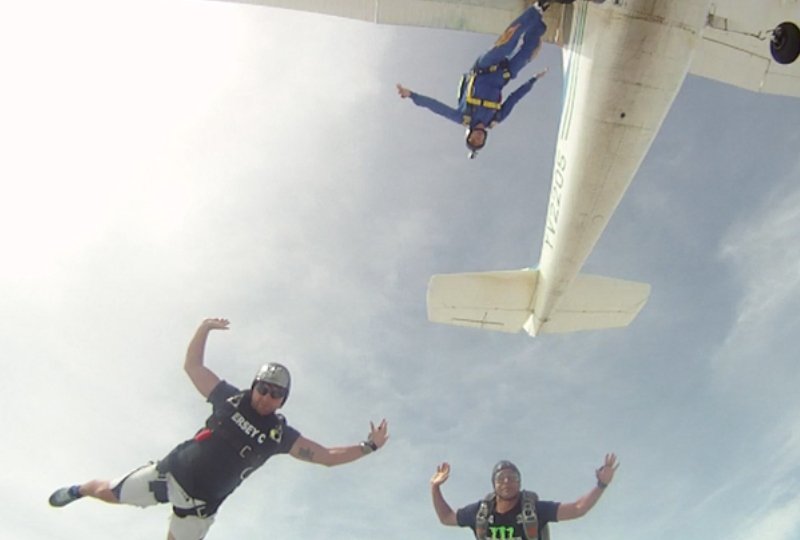
Freefall and parachute deployment at low altitude.
In the eighth and final section, you will take s skydive at 5,000 feet. Whereas all previous skydives were at more than twice this height and concentrating on freefall techniques, this skydive focuses on your ability to stabilize under pressure and deploy your parachute. As soon as you jump, you need to get stable, and within a few seconds, you must deploy your parachute.
While it may seem scary, you will be in safe hands. As well as having your instructor jumping with you, you will also wear an ADD. An ADD is a device that automatically deploys your parachute if you drop below a pre-determined altitude.
How much are complete AFF and an A license skydiving courses?
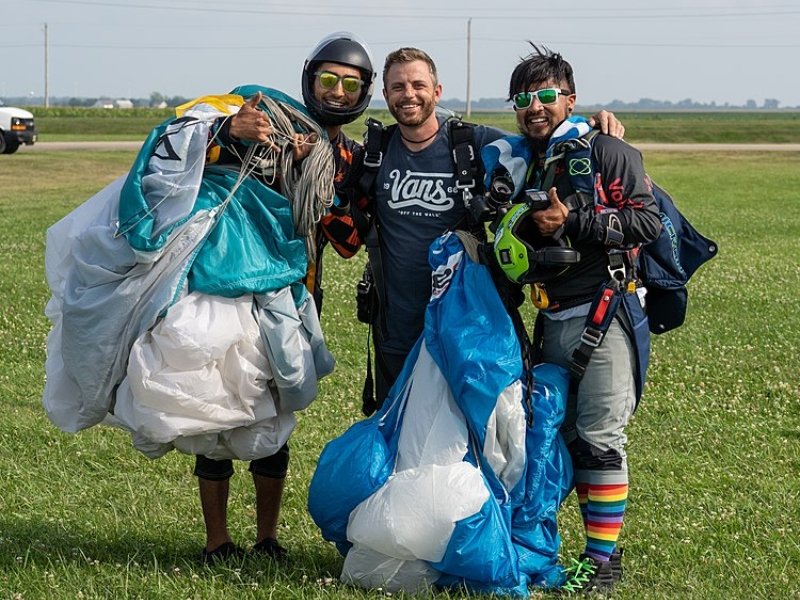
Breaking the AFF course into sections helps you manage your progress, stagger the costs, and make sure you are happy to progress without committing to an entire course. However, it’s better to opt for a complete course for those determined to get certified as soon as possible.
A total AFF program should cost around $1,500 to $1,800. It’s possible to complete it within 3-4 days.
An A license top-up program will consist of 18 extra jumps (taking your total above the required 25 jumps) and should cost about $1,100 to $1,500. This course can be completed in about 5-7 days.
A complete course, taking you through the AFF and to your A license, will cost around $2,800 to $4,500. You should expect it to take about two weeks to complete, after which you officially be a USPA (United States Parachute Association) licensed skydiver!
It’s also worth noting some additional costs you’ll encounter early on in your skydiving adventure. If you take too long between sections (more than 30 days), you may need to take recurrency training to ensure you are keeping up with the progress. Depending on what is required, this can cost anything from $150 to $250.
You may also choose to become a member of the USPA (United States Parachute Association). Fees start at $66 per year and go up to $2,500 for a lifetime membership.

